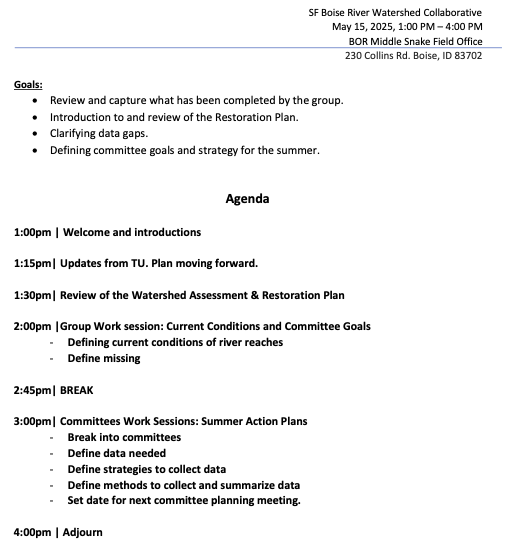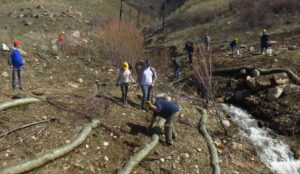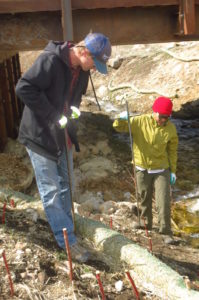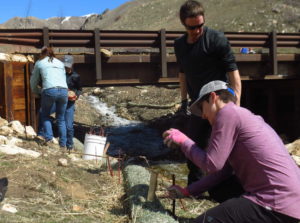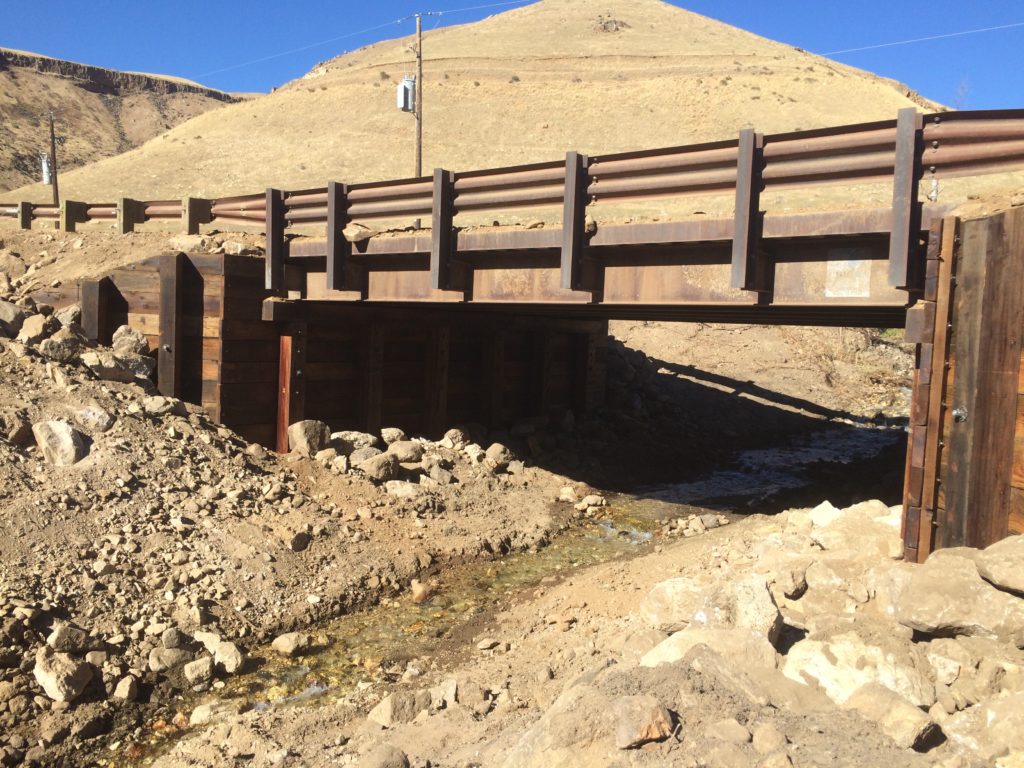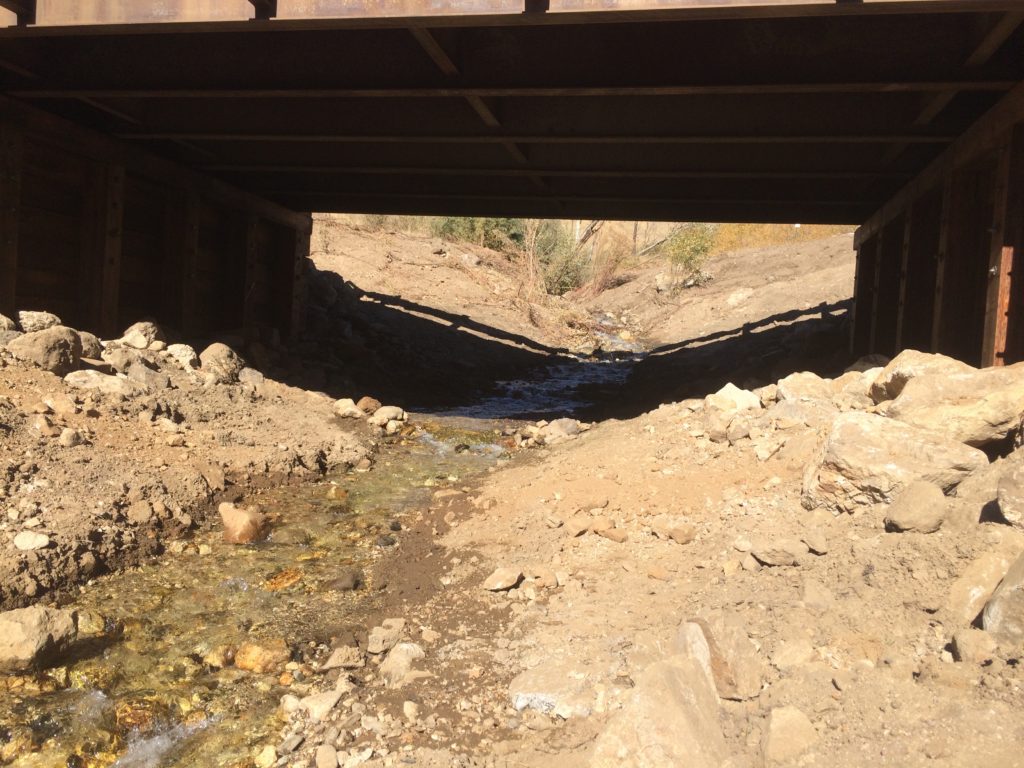Photos from December 2023 SF Boise Visit
River and watershed conditions, such as risk of soil erosion, become most apparent in the winter when the growing season is over and vegetation growth does not obscure ground conditions. A field trip to the South Fork Boise River shows a number of the sites where some erosion control could be implemented.
This stack of photos is in a .pdf format and is a huge 200 MB file and can be accessed here. It will open in a new tab.
Flows Remain Low This Spring
Wow, it’s mid-May and the flows from Anderson Ranch Dam remain at the winter minimum 300 cfs. Normally this time of year the flows in the South Fork Boise River will be running 600 cfs. As the chart below shows, last year the flows increase from 300 cfs to 600 cfs on April 1, 2021.
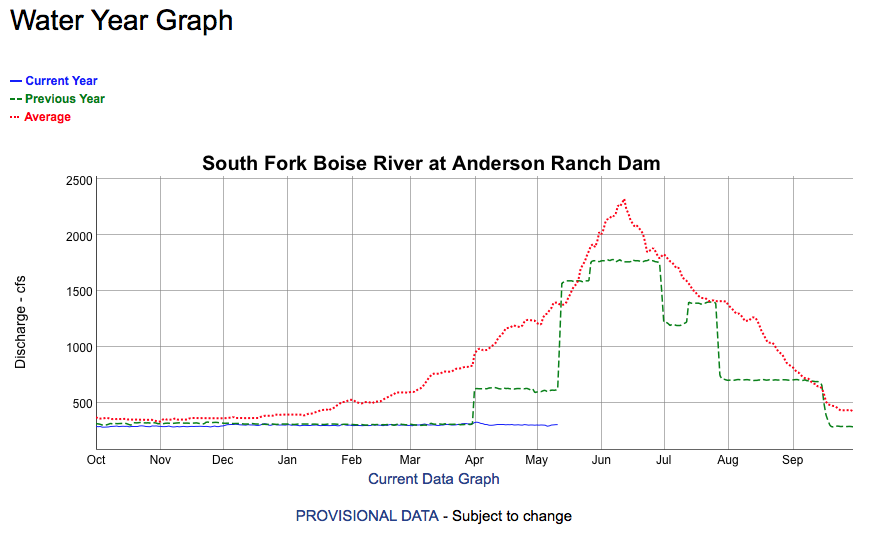
The last time that 300 cfs flows extended into the spring spawning season was 2014, which came after the 2013 debris flows that had covered much of the South Fork Boise in sediment. A double whammy! The flows increased in early June as this chart from a previous post in 2014 showed:

One result of the 600 cfs flows in the spring months is it waters up some side channels and allows some rainbow trout spawning in those locations. At 300 cfs we probably have less spawning areas available.
Why is this happening? There is a pretty good reason. The Boise River reservoir system is below average in water because last year was so hot and dry and until the last few weeks the snowpack was below normal. And, Anderson Ranch Reservoir sits highest upstream in the Boise River basin among the storage reservoirs and the water stored highest upstream is most valuable for future uses. As the graph below shows, Anderson Ranch is filling, maybe a little faster than it filled last year, but the total contents are still well below both long-term average and last year as well.
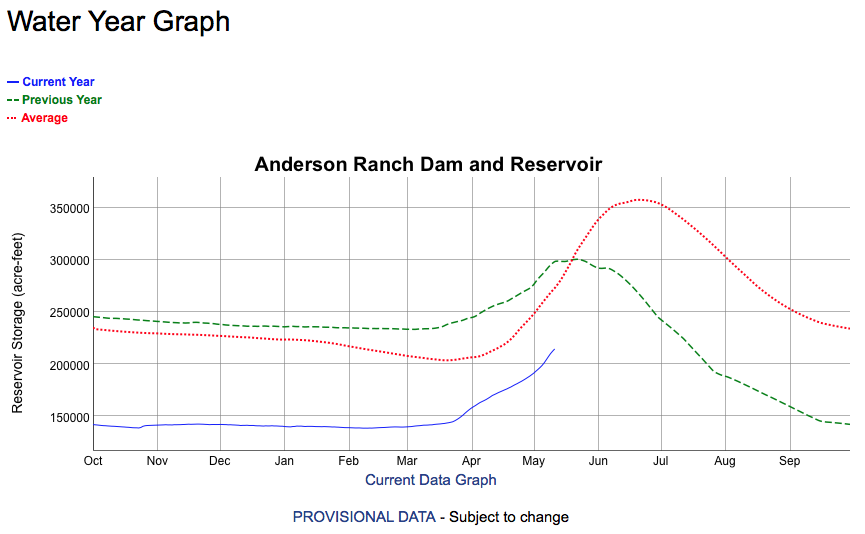
The flow of 300 cfs since April 1 being half the normal rate means so far some 25,000 acre feet more water in the reservoir then there would be if the flows were at 600 cfs.
Currently Anderson Ranch Reservoir is approximately half full and the downstream Arrowrock and Lucky Peak projects are well above half, with the natural flows from the Middle Fork Boise River poised to fill those pools when the snow melt starts in earnest.
What are the implications for the fishery? There may be less spawning, or survival from it, in the mainstream river this year, versus when the river flows at 600 cfs. It also points to the importance of the tributaries that can contribute more spawning habitat with actions to improve access (where culverts may inhibit fish passage) and improved habitat. A balance of both mainstream and tributary spawning is necessary or balance the risks to the population.
Dispatches from Pierce Creek
The March 30 planting project is done. Here’s a round up of photos and observations.
The Forest Service assigned five personnel. They provided instruction, equipment and leadership on the ground. They praised us saying we knew how to through a good party. They may be able to partner with new projects this season and promised to keep me in their loop. Barber Flats interestingly is a target.
With last minute unanticipated subtractions and additions TU contributed at least a dozen and a half to two dozen persons including the cooking crew. Weather was perfect. Kudos to Fred Hebert and his two buddies for a chili based lunch with our kitchen equipment. They gave Leadership credits to one Eagle Scout.
Boy Scouts (BSA) will monitor “take” during the summer. FS will share details with us.
The BSA swelled our ranks immensely with scouts and their family members. There were easily four dozen persons all actively cutting and planting from 11:00 a.m. to 3:00 p.m. sans 45 minutes for lunch. Together we all placed literally hundreds of 12 to 18 inch pieces into the embankments along Pierce Creek both below and well above the bridge and even under the bridge and around wattles FS had installed earlier to bank retard erosion near the bridge. Rain is anticipated now soon to follow this week that should help.
I would like to add to Dr O’s report the planting went really well and Doug did show and there were probably several other members that showed also who didn’t send in emails but may have been on some of the other lists. Every one got fed well and there was no food left to clean up Fred was able to get a few of the scout to take seconds to polish off the chili.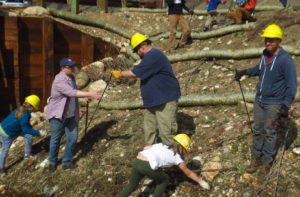
The Forest Service did an outstanding job in mitigating the impacts of the migration barriers left after the initial big blowout the willows initially planted were well established below the bridge. There is a potential barrier where the creek drops off the alluvial fan into the South Fork that will probably change after high water this year. If BOR doesn’t start releasing water very soon we will probably seem some very high water on the SF later this spring.
I did stop below the tailwater put in to see what the talk was on the so called alternate put in was about. I don’t think it is a big deal yet. It is a very steep high bank and only soft boats can be launched there You have got to want to fish that section pretty bad to put a boat down that bank. At the 600cfs that the river was at there was a route thru the rapid. There was at least one must make move a weaker boatman would probably not want to run it at this level or lower, once the river comes up it should open up and be plenty of room just some big waves and maybe a hole to stay out of.
Over all it was a good outing couldn’t beat the weather
Bridge Rebuilt
The bridge abutments on the Pierce Creek bridge have been replaced. The project is a cooperative venture of the Mountain Home Highway District and the Boise National Forest. The abutments are treated laminated wood beams and posts, and driven several feet into the ground next to the stream.
The project was completed in fall 2018 and secures the bridge for the long term.
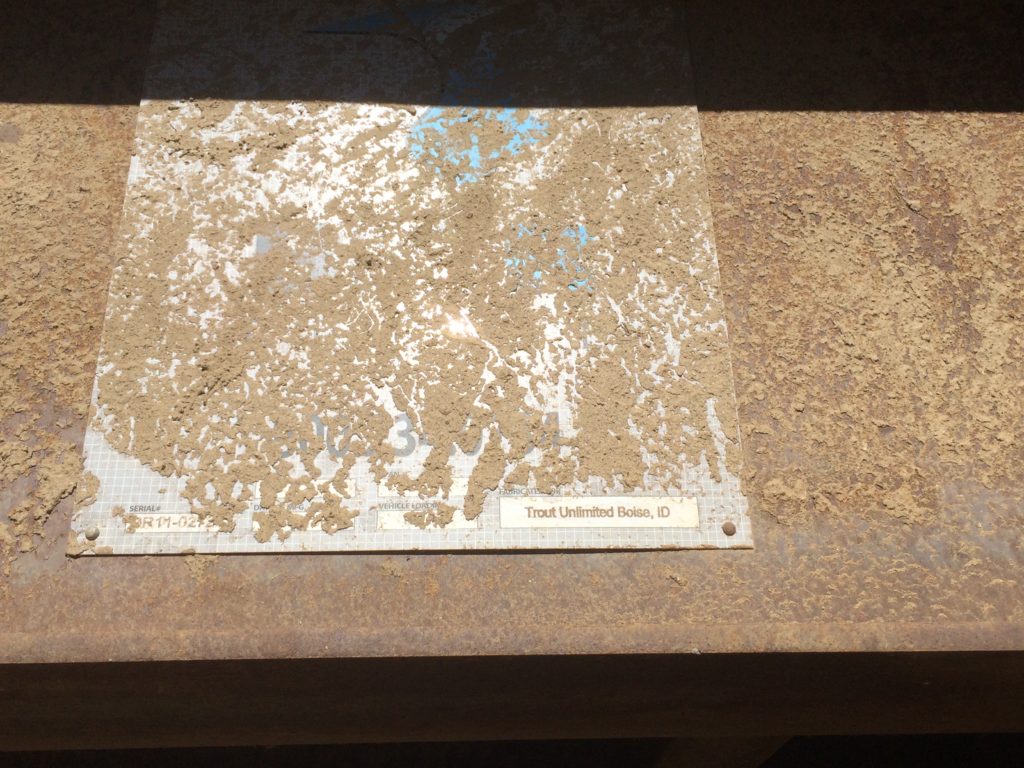
A mud crust over the plate on the bridge. Mud deposited from the numerous debris flow episodes 2013-2014.
The bridge was placed on its original sill in November 2011. The Elk Complex Wildfire of 2013 led to massive debris flows in Pierce Creek and ultimately would have compromised the foundation for the bridge. So the decision was made to life the bridge and replace the substructure and put it back in place, which happened in fall 2018.
